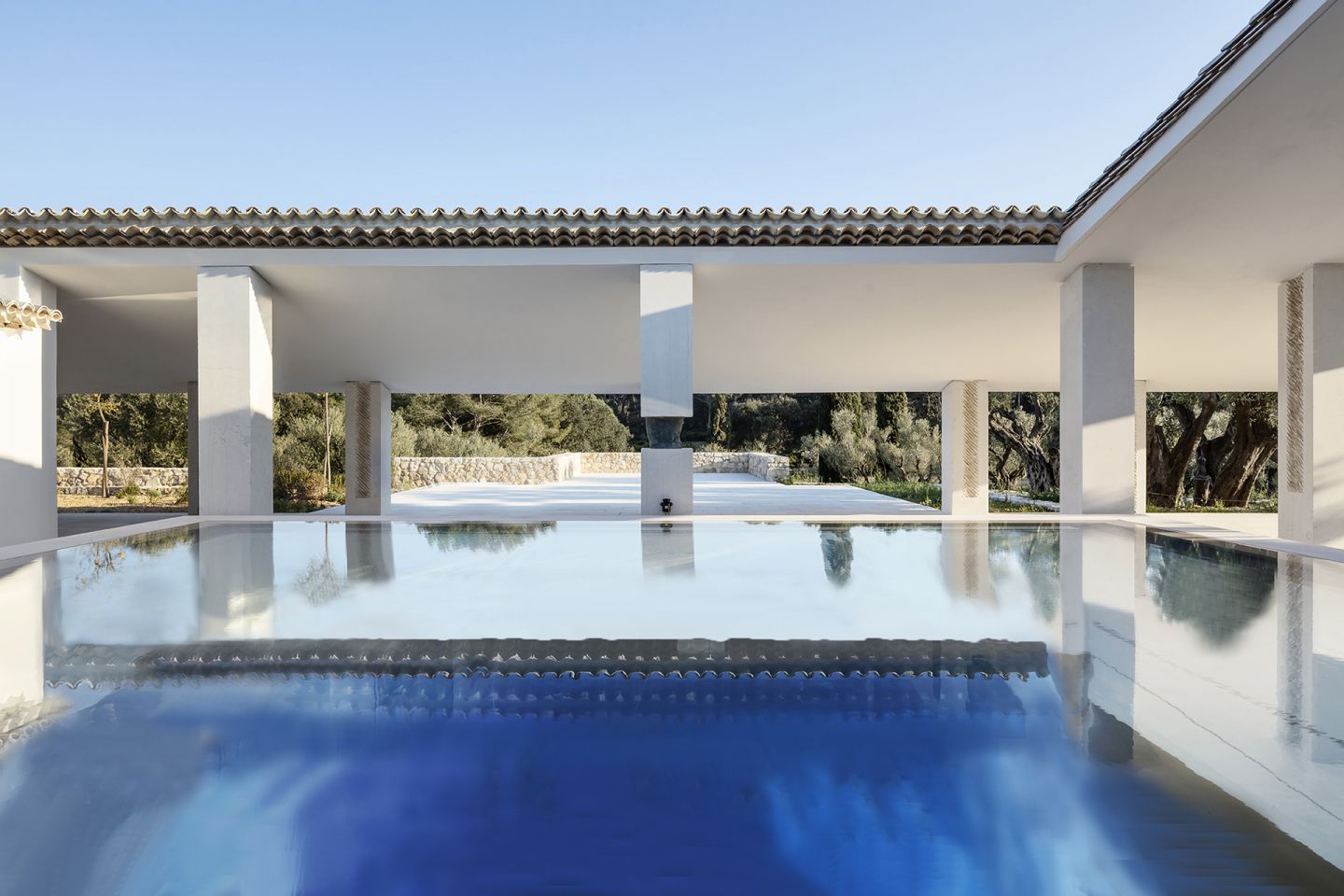
Foundation Carmignac
Whenever one hears of people from financial backgrounds building collections or opening art foundations, it is hard not to associate them with speculation, collections rife with the biggest names in art, purposeful tax reduction, and other motives. For these reasons, they are often scoffed at by collectors who collect purely for love and interest. Many may have retained such preconceived notions about Edouard Carmignac, the French financial magnate and founder of the Carmignac Foundation—but I unearthed that these sentiments are simply not true.
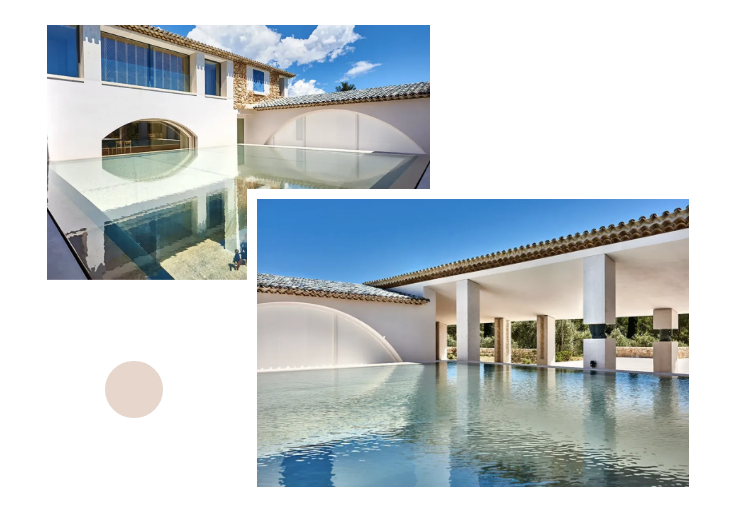
Villa carmignac©Fondation Carmignac
Photo Laurent Lecat
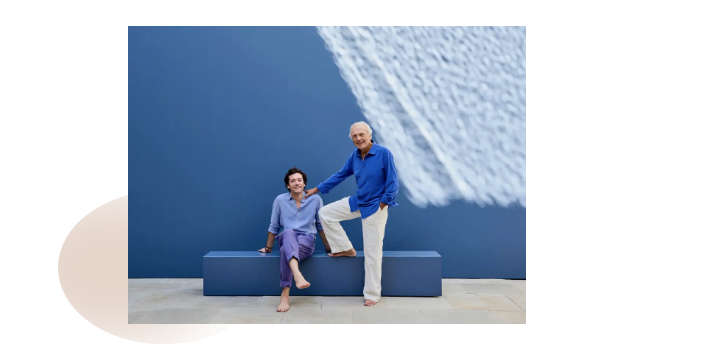
Edouard Carmignac and Charles Carmignac
© Photo Anthony Lanneretonne
As the founder of the French investment fund Carmignac Gestion, Edouard Carmignac’s success places him in league with many financial giants. However, the vast number of blue-chip artworks collected by his foundation is not necessarily the most impressive aspect of his collection. Rather, Carmignac’s romantic youthful intentions, such as gifting a Max Ernst work to the love of his life, hint that the story of this great collector—named one of the ‘Top 200 collectors’ by ARTnews—might be a little different.
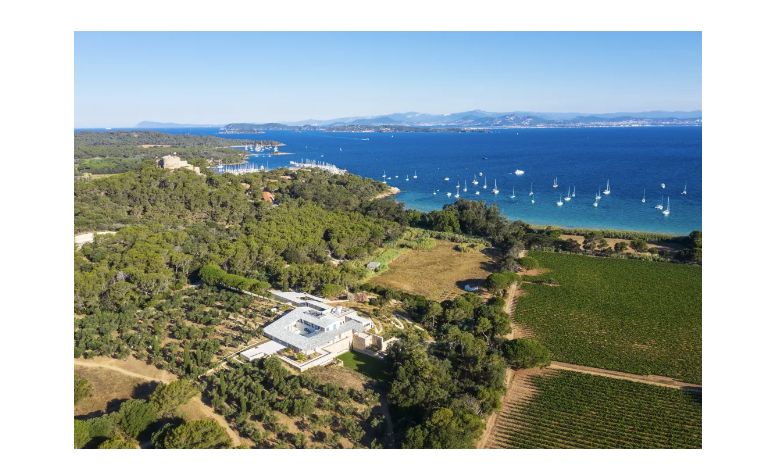
© Fondation Carmignac. Photo Camille Moirenc
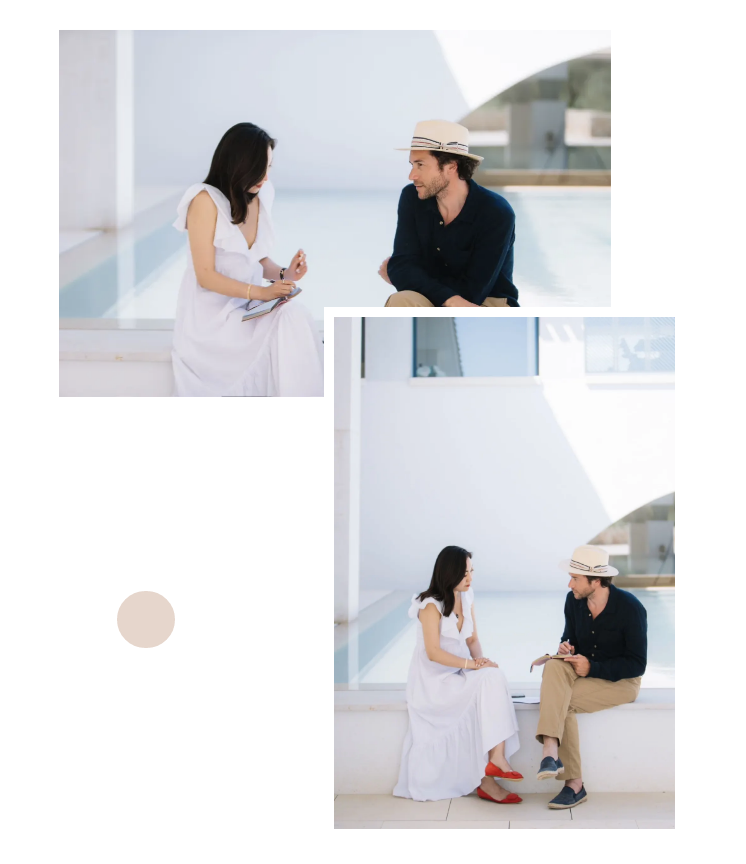
Portrait of Luning and Charles
Not long ago, I travelled to Porquerolles, the idyllic island in Southern France, to visit Villa Carmignac, an art venue opened by Edouard in 2018 after founding the Fondation Carmignac at the turn of the millennium. There, Edouard’s son, Charles Carmignac, the current director of the foundation, shared many anecdotes about his father and his own collection.
Charles told me that his father’s first addition to his collection was not, in fact, Max Ernst’s ‘Alice in Wonderland (a scene)’, but a painting copied by his mother. At the time, his parents were still living in New York, and Edouard had not yet achieved the level of success he enjoys today. He fell in love with an expensive painting, so his wife spent weeks meticulously copying every detail of the work, and it became their first ‘collection’, a piece brimming with memories.
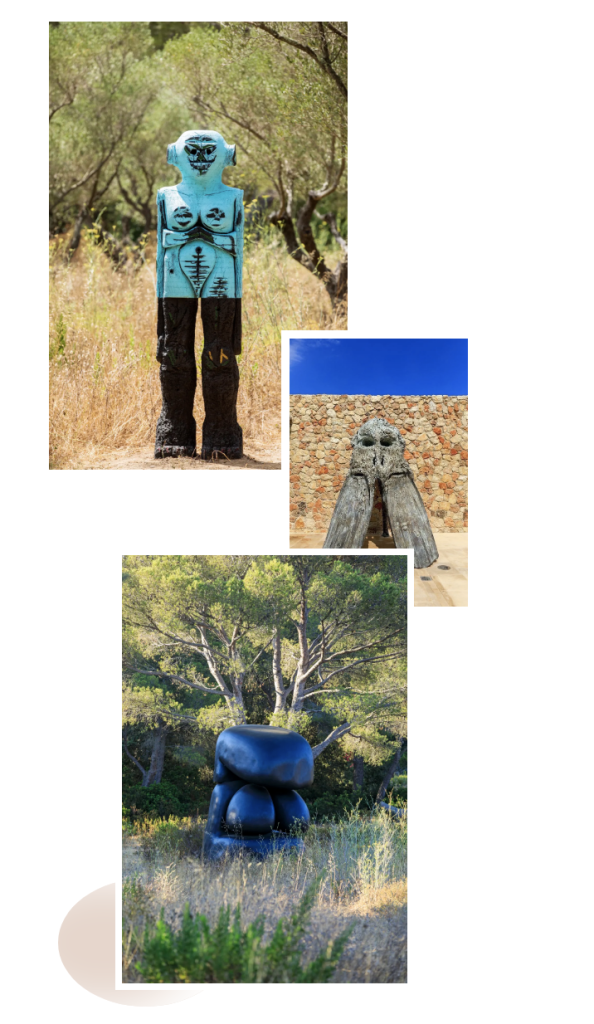
Permanent collections of Carmignac foundation Top:Huma Bhabha, Receiver, 2019 © Huma Bhabha – Photo Camille Moirenc Middle:Miquel Barceló, L’Alycastre, 2018 Adagp, Paris 2021 © Fondation Carmignac – Photo Camille Moirenc Bottom:Wang Keping, LOLO, 2018 © Wang Keping – Fondation Carmignac. Photo Camille Moirenc
Although Edouard has amassed all the masters’ blue-chip works, unlike many big collectors who tick off their shopping lists, Edouard has claimed in previous interviews that he uses the word “compulsion” to describe his collecting behavior. A sensual urge and urgent desire that is inextricably linked to his life experiences and emotional connections. As a young man, he was drawn to music, especially rock, but after completing his MBA at Columbia University, he entered the financial industry. It struck me that this man of great passion and fervour lets his passions guide his art decisions rather than financial strategy.
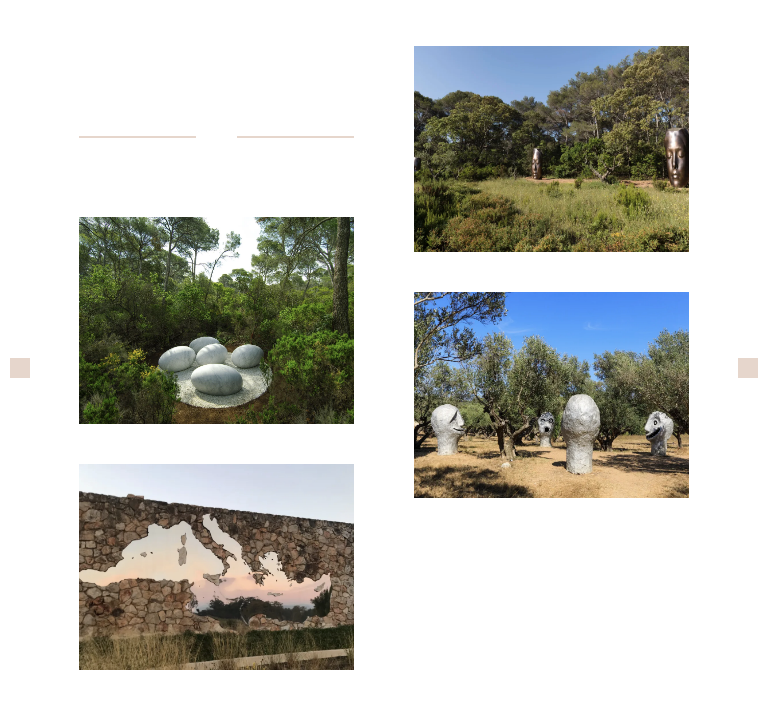
Permanent Collection of Carmignac foundation Left-Top:Nils-Udo, La couvée, 2018 © Fondation Carmignac – Photo : Nils-Ud Left-Botom:Jean Denant, La Traversée, 2018 © Fondation Carmignac – Photo Camille Gasser Right-Top:Jaume Plensa, Les trois Alchimistes, 2018. © Fondation Carmignac – © Adagp, Paris, 2021 – Photo : Marc Domage Right-Bottom:Ugo Rondinone, Four seasons 2018© Fondation Carmignac – Photo Camille Moirenc
His preference for pop art is a great example of his inclinations. Pop art, born during Carmignac’s formative years, is a genre he can both relate to and empathise with. In 1984, Edouard met Basquiat through his involvement in the pop art circle and became friends with him. Basquiat portrayed him dancing, and the ‘C’ logo in the painting even inspired the company’s logo design when Edouard founded ‘Carmignac Gestion’ five years later.
Many collectors’ collections are, in fact, an accumulation of ‘chance’—perhaps an encounter with an artist or an ‘enlightenment’ about a school of art as a result of an experience. However, the wealthy and eager collector often loses sight of treasures aside from money, such as the time spent acquiring a favourite piece or the unexpectedly touching moments along the way. If a collection becomes less of an emotional journey and lacks unexpected encounters with people and objects, there is less appreciation and understanding of other people’s perspectives. Ultimately, the collection loses its romance, and the sale of the art becomes purely a monetary transaction, with the process of interaction between collectors and art losing its power.
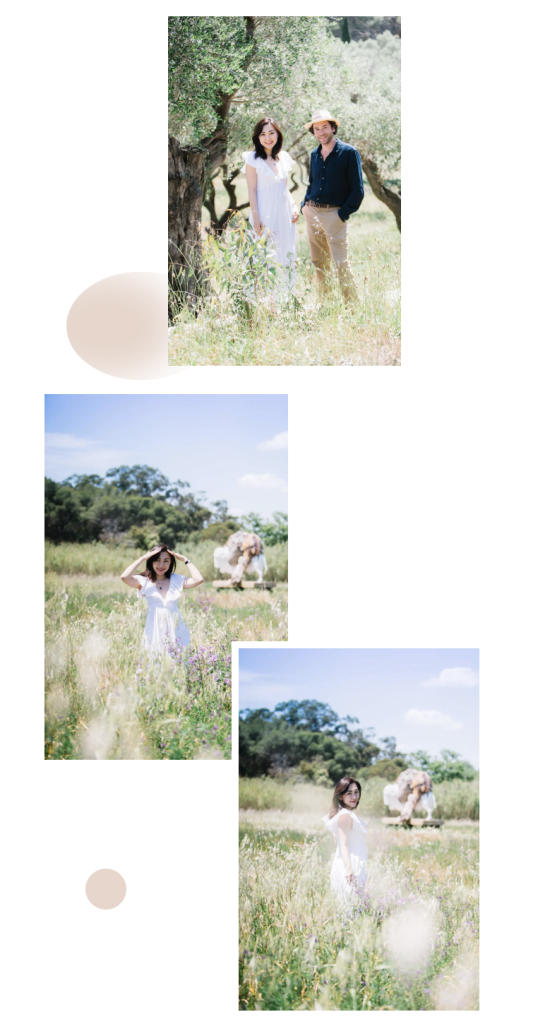
Luning and Charles, Permanent Collection sculpture in the park
Charles believes that he has personally experienced the power of art to change hearts and minds. Many years ago, he travelled to Teshima, Japan, where he saw in person the work of Japanese artist Rei Naito—a giant concrete wall. Observing the movement of water droplets under the wind and their interaction with the elements around them, he instantly recalled a woman he once loved. It is difficult to describe the power of such sudden perception and how love can be rekindled from a dying flame. After this revelation, he returned to France, phoned his past love, and managed to revive their relationship.
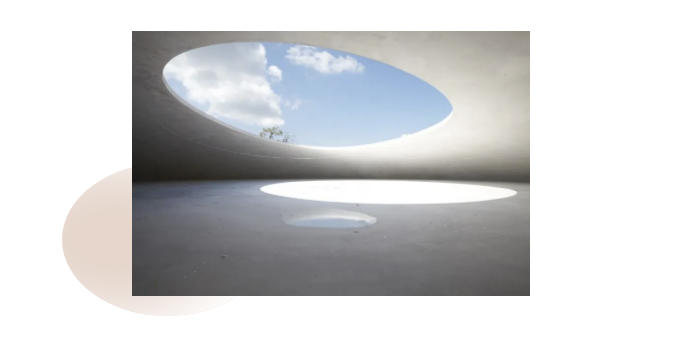
Rei Naito’s work on Teshima island
Not only do artworks have the power to move people and create intense emotional responses, but the same can also be said for thoughtfully curated exhibitions. Witnessing a collection of works can be even more awe-inspiring than a single piece. Charles mentioned that Jean-Marie Gallais, the current curator of the Pinault Collection, curated an exhibition at Centre Pompidou-Metz called Painting The Night, which changed his preconception of nighttime. He found himself doing many things he had never dared to do before during later hours—it had a freeing effect on him that totally changed his lifestyle.
The Carmignac Foundation’s current exhibition on the island, The Inner Island, curated by the same curator, includes Peter Doig, Kiki Smith, Auguste Rodin, Roy Lichtenstein, Andrew Cranston, Francis Upritchard, and other artists across various media. The exhibition begins and ends with the island, a site-specific experience encouraging viewers to rethink their perception of the island as a spiritual place.
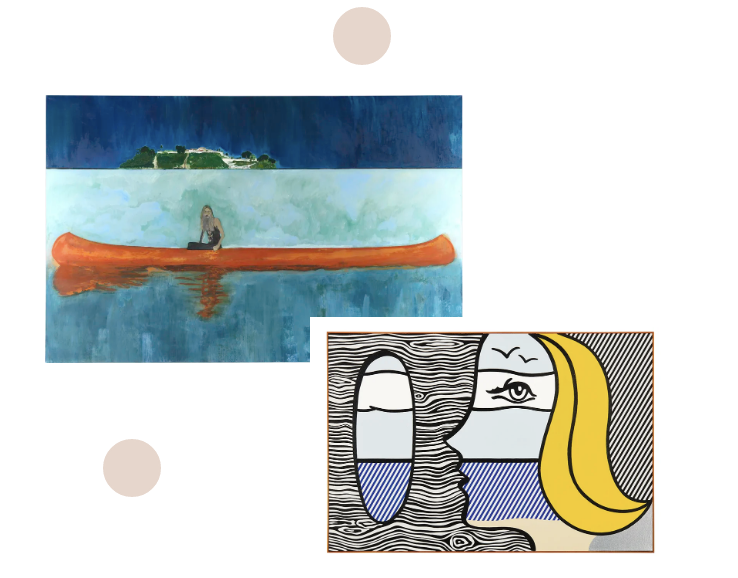
Current exhibition: The Inner Island Top:PETER DOIG,100 Years Ago, 2001,Oil on canvas – 229 x 359 cm,Centre Pompidou, Paris – Musée national d’art moderne – Centre de création industrielle © Peter Doig. All Rights Reserved, DACS/Adagp, Paris, 2023.Photo © Centre Pompidou, MNAM- CCI, Dist. RMN-Grand Palais / Audrey Laurans Bottom:ROY LICHTENSTEIN,Landscape, 1977,Oil and magna on canvas – 101,6 x 152,4 cm Carmignac Collection © Estate of Roy Lichtenstein New York / Adagp, Paris, 2023
Sometimes, you have to wait for a true connection with someone or something, which might not happen in the first encounter but maybe days, weeks, months, or even years later. Villa Carmignac was originally a farmhouse featured in French New Wave director Jean-Luc Godard’s film ‘Pierrot le Fou.’ It was later bought by architect Henri Vidal in the 1980s and renovated into a villa. Edouard first came to Porquerolles, which he describes as a “forest floating on the sea,” when he was invited to Vidal’s daughter’s wedding 30 years ago—even then, he fell in love with the place. A few years later, when Vidal passed away, his daughter contacted Edouard and confirmed the sale, leading to the current Villa Carmignac. Charles told me this event was monumental for his father, who used the island as the groundwork for continuing the foundation’s legacy.
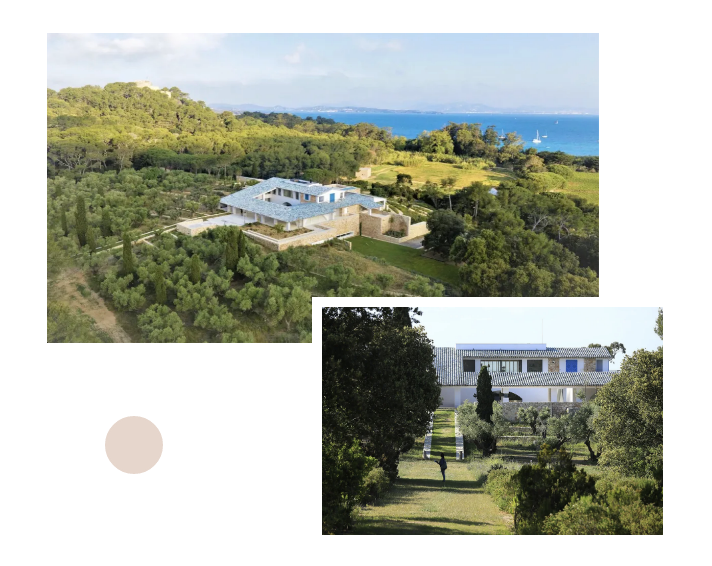
The Villa ©Moirenc
Charles’ upbringing differed from his father’s, making him more interested in conceptual art. One of his prized pieces in his personal collection is ‘Millennium Hourglass’ by Benoît Pype. The special asphalt material in the hourglass means it takes a thousand years to complete the pouring. Another piece is ‘Night Enclosed in Marble’ by Charbel-Joseph H. Boutros, a white marble box intended to encase the night of Lebanon.
Since Charles officially started working on the foundation, father and son have discussed and exchanged ideas, not always agreeing on what to do: “After all, we’re not clones,” Charles says. His father, Edouard, prefers works that are visual and instantly intuitive, pieces that do not need to be explained, although Charles says his father is also attracted to conceptual art but stubbornly refuses to admit it.
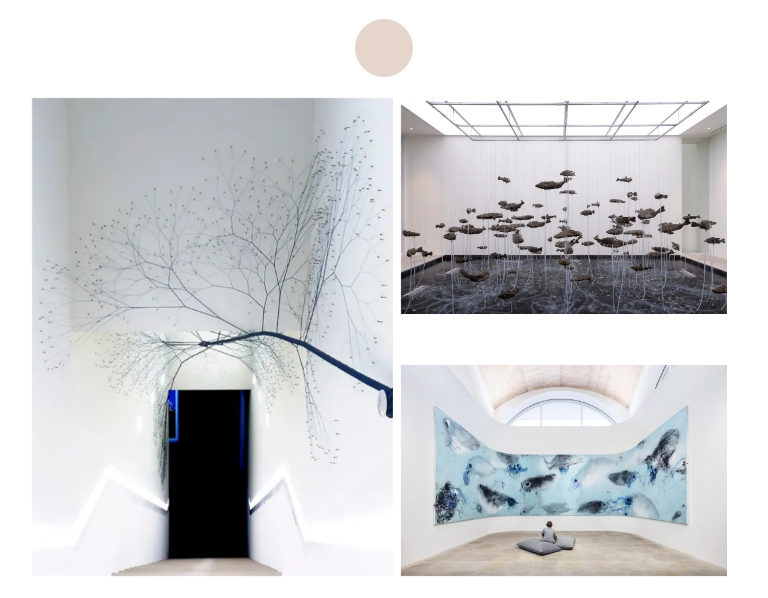
Left:Ciclotrama 50 (wind), 2018 © Photo Janaina Mello Landini Right-Top:Bruce Nauman, One Hundred Fish Fountain, 2005. © Fondation Carmignac – Adagp, Paris, 2021 – Photo Marc Domage Right-Bottom:Miquel Barceló, Not titled yet, 2018 © Fondation Carmignac – Adagp, Paris, 2021 – Photo : Luc Boegly, David Desrimais Editeur
Inheriting his father’s artistic tendencies and carefree nature, Charles chose a different path and a far more diverse identity than his father: a political economy major, a musician in the rock band Moriarty, a journalist, an entrepreneur, an enigma writer, and the current director of the Carmignac Foundation. His cross-disciplinary background allows him to be constantly inspired by new and unexpected ways of running the foundation.
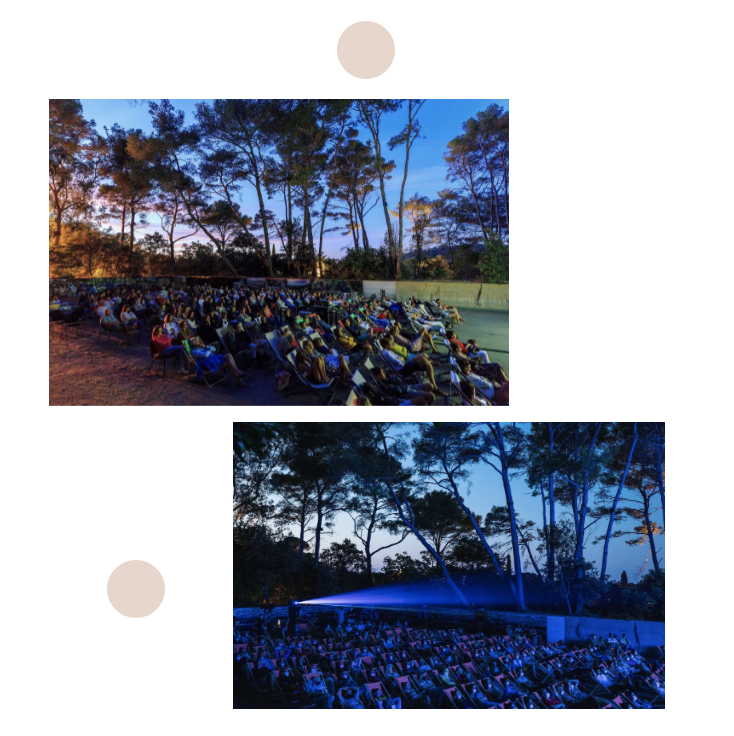
Outdoor cinema Villa Carmignac
A decade in music has made Charles a great listener as well as a great businessman—he doesn’t have the collectors’ mentality, instead wanting to open the exhibitions to a larger public. His experience in newspaper entrepreneurship and journalism has given him a wide range of resources, the ability to work with different types of people, and a big-picture view. More importantly, these experiences have allowed Charles to focus on a ‘storytelling’ approach to promoting art and presenting exhibitions.
With an interest in journalism and a keen eye for current political events, the Foundation created another pillar, the Carmignac Photojournalism Award, in 2009 to support photojournalists in the field. Charles talked about empathising with the biggest challenge facing journalism: the lack of funding and local resources. Although large amounts of work go into a few simple pages of a newspaper, the selection of a topic may result from a long period of investigation, with rarely any funding to support long-form photojournalistic reports. The Foundation supports the laureates of the Photojournalism Awards each year, funding six months of fieldwork on a designated theme and producing both a monograph and a travelling exhibition. Through the power of photojournalism, they hope to reveal and raise awareness about social, environmental, and human rights issues.
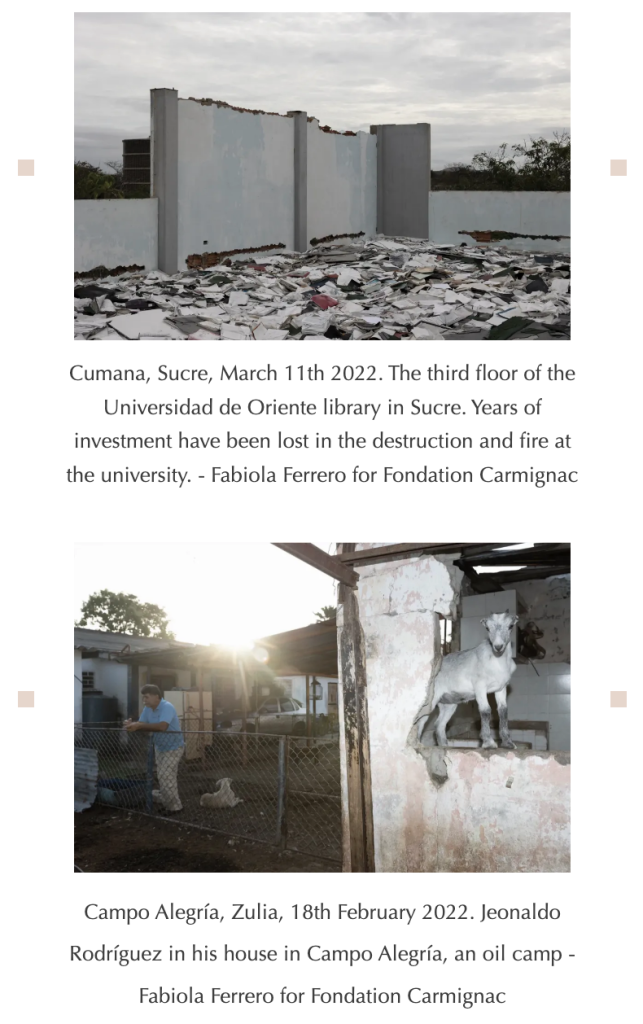
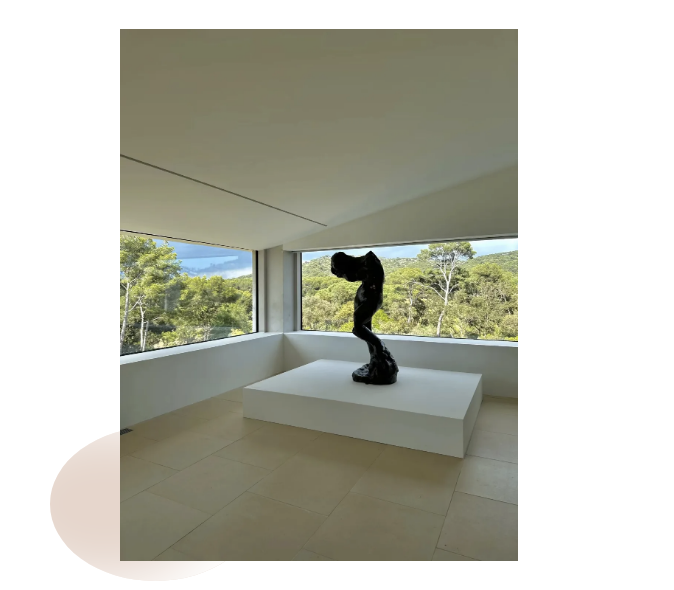
Auguste Rodin : La Voix intérieure (ou La Méditation sans bras), 1896
Villa Carmignac’s location is unique—access to the island requires a boat ride across the Mediterranean and a 15-minute hike up a mountain road before arriving at the pavilion. I immediately succumbed to my hay fever, but I was still enchanted by the untouched beauty of the natural environment. Villa Carmignac has maintained as much of the original landscape and geological features of the area as possible, without exaggerated and complicated alterations. The exhibition space is designed in accordance with the principles of island-based, simple, and effective design, using museum-quality standards and subtle integration with the surrounding landscape to provide the best possible conditions for displaying the works.
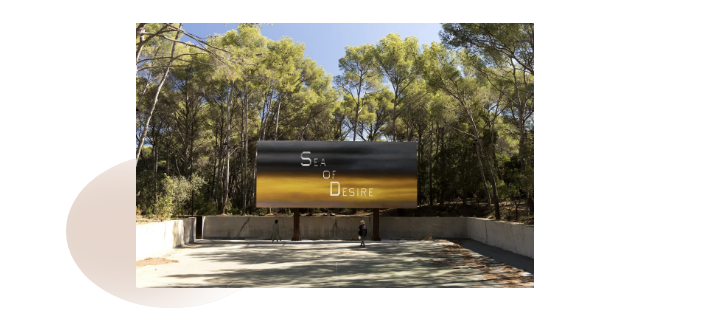
Ed Ruscha, Sea Of Desire, 2018© Fondation Carmignac – Photo Marc Domage
Since its opening in 2018, Villa Carmignac has been committed to developing links with local institutions and, in 2020, created the Plein Sud network in partnership with Port-Cros National Park and Villa Noailles, a network of art communities in the south of France, to address regional environmental crises. Such a highly humane and forward-looking foundation is more than just a glittering list of collections and interesting anecdotes; it is a place that inspires and fosters engagement not only with art but also with the world around us.
-the end-
Text: Luning
Copyediting: Rosie


